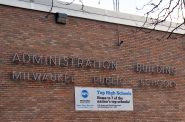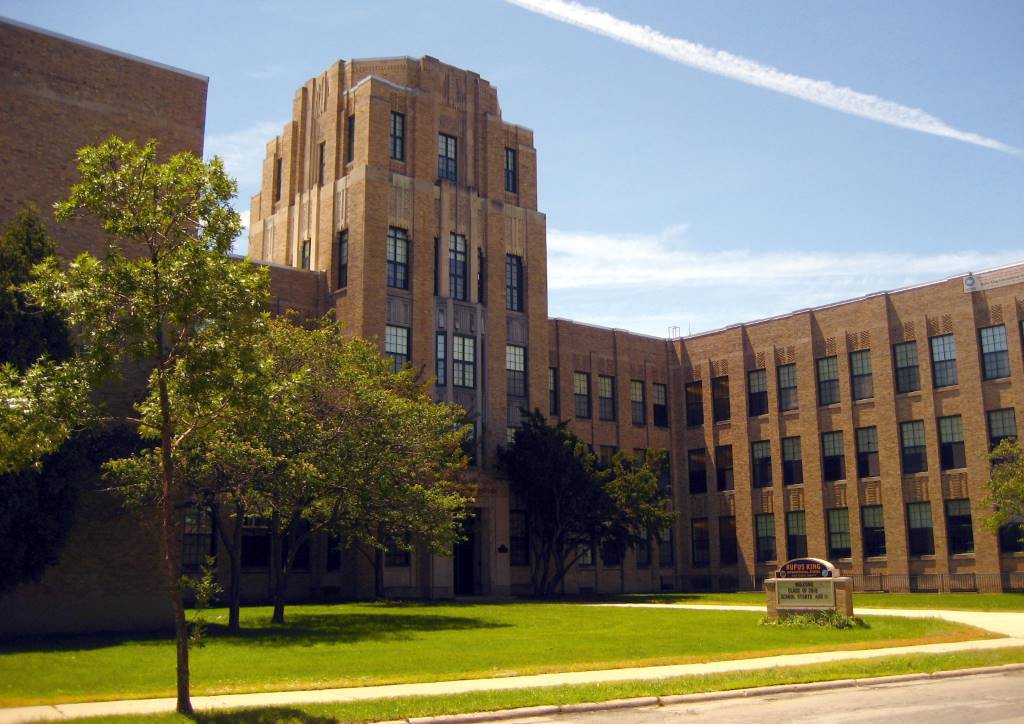MPS Slow To Right Size Its Building Footprint
Two board members want to see plan, faster action amid declining enrollment trend.
In November, Milwaukee Public Schools will present an analysis of the condition of its school buildings. The last such analysis was completed in 2018. A recent study by Wisconsin Policy Forum questioned the continued use of this older facilities analysis.
The new analysis will not recommend what MPS should do with empty and underutilized buildings. MPS administration stated at an Oct. 24 school board meeting that a committee has been set up to study the problem and come up with recommendations. The process to right size the district would not be completed until the 2027-28 school year.
MPS has been losing students for over a decade. But Milwaukee students are no longer migrating to charter schools nor transferring to suburban schools in increasing numbers. There is some evidence that more students are in private schools and being home schooled, but exact numbers are difficult to quantify and do not account for the overall drop in MPS enrollment. MPS has actually seen a slight increase in enrollment of 368 students in the current school year, but it comes after a significant decrease in enrollment the previous year.
This increase may not translate into a change in the long-term downward trend.
The losses have been statewide as well. Declining birthrates are often considered a major factor.
Meanwhile, suburban school districts such as Cudahy and West Allis–West Milwaukee have already closed underutilized buildings. Kenosha and Wauwatosa are in the process of selecting buildings to be closed next school year.
The slow pace MPS has taken at addressing its facility needs has caused some school board members to call for faster action on the part of the MPS administration.
At an Oct. 19 school board committee meeting, school board director Megan O’Halloran asked the committee to consider a motion that the administration “bring a report regarding, and recommendations for the use of, the long-term capital improvement trust fund… no later than the February 2024 Board cycle.” Because O’Halloran is not a member of this committee, she asked fellow board and committee member, Henry Leonard, to introduce the amendment.
O’Halloran listed a series of facility needs that the board has asked the administration to address such as needed elevator repairs at Rufus King High School only to discover that several other school elevators were in worse shape. Cooper Elementary School and Rufus King are asking for classroom expansion and athletic facility upgrades. Meanwhile, the district is sitting on $129 million in the long-term capital trust fund that can be used for facility improvements.
The need is there, said O’Halloran. “Can we consider new facilities that are maybe energy efficient? When we put forward the $63 million for ESSER funding, we received $400 million worth of requests.”
And the longer the district waits, said O’Halloran, “costs may have grown because of inflation and competition with other construction projects.” In summation, O’Halloran stated, “We are educating 21st-century children in 19th-century buildings.”
The administration answered that they could meet the February deadline, but offered no other explanation or defense.
The administration did offer to use the extension funds for the creation of a new northside recreation center and upgrading of recreation facilities at an amount of just under $114.5 million in the tax levy. Districts around the state have been using extension funds that fall outside of the state school revenue caps for “dual use” facilities such as swimming pools, fine art centers and playfields that can be used both by the schools and general public.
Leonard told Urban Milwaukee that the MPS administration “understands that we have to come up with a plan for all these empty buildings… Do we want to put all these buildings on the market?”
The district has been reluctant to close buildings in the past for fear that private schools would use provisions in state law that would allow them to buy the vacated MPS buildings and open or expand private schools. MPS can only sell the surplus buildings to other school operators for a period of two years before they can redeveloped into housing or other uses.
Leonard questions whether that is now a major problem. He points to expansion for Cristo Rey and St. Augustine private schools that have brand new buildings financed through private funds attracting parents and students. “They no longer need our buildings,” says Leonard. MPS average building age is 80 years old.
Leonard says he has talked with Sean Kane, MPS senior director of facilities and maintenance, about how the district could tackle the building dilemma. One way would be to pick a building in fair condition, give it all the “bells and whistles” and tear down the older, underutilized building around it. In some cases, a new building may be more cost-efficient than simply remodeling. “We could give our parents something attractive to go towards,” says Leonard, rather than parents being fixated on the school closing. Consolidating facilities can actually save money in the long run, making them more energy efficient and reducing staff shortages.
But this district has been too slow to act, reflects Leonard. “Everything is done, step by step, with the city attorneys, checking everything. That, in itself, is a slow process.” Trying to finally right size the district as late as 2027, Leonard concludes, “That might be too late.”
If you think stories like this are important, become a member of Urban Milwaukee and help support real, independent journalism. Plus you get some cool added benefits.
K-12 Education
-
MPS Training in Science of Reading Going Poorly
 Nov 23rd, 2025 by Terry Falk
Nov 23rd, 2025 by Terry Falk
-
The Fear Factor at MPS
 Nov 11th, 2025 by Terry Falk
Nov 11th, 2025 by Terry Falk
-
MPS Reaching Out to Community
 Nov 2nd, 2025 by Terry Falk
Nov 2nd, 2025 by Terry Falk























YOUR ATTENTION PLEASE – If the mayor’s plan to
increase Milwaukee’s population to 1 million succeeds,
we will need MORE facilities.
Building compatibility can and will at times be a moving target.
A reasonably sized reserve of suitable buildings would be
a good strategy.
To increase options, use barter or barter plus cash
to manage this reserve. For longer-term projections,
compatible buildings that can be leased out in the interim
should be considered.
If a suitable trade cannot be done within a given jurisdiction,
find a barter exchange to expand the range of deals.
Often they can even handle 3-way transactions.